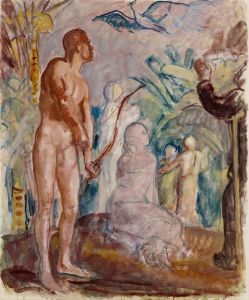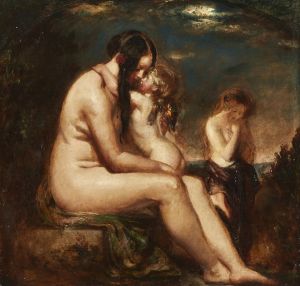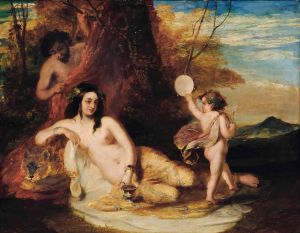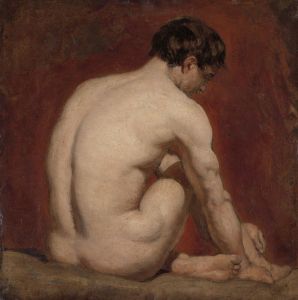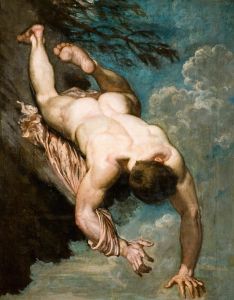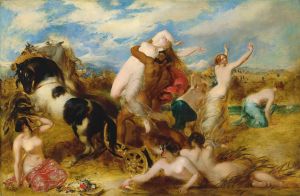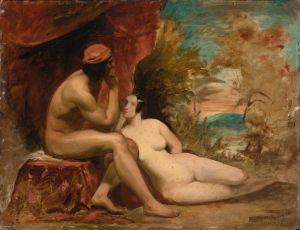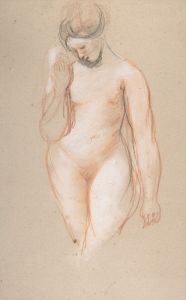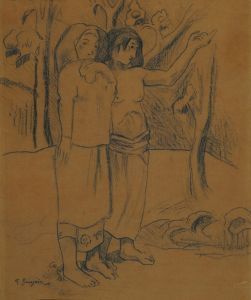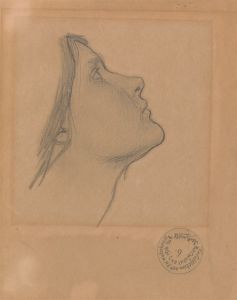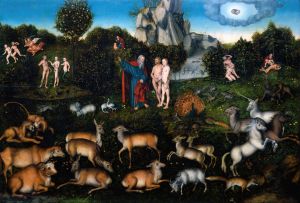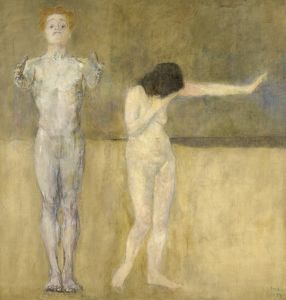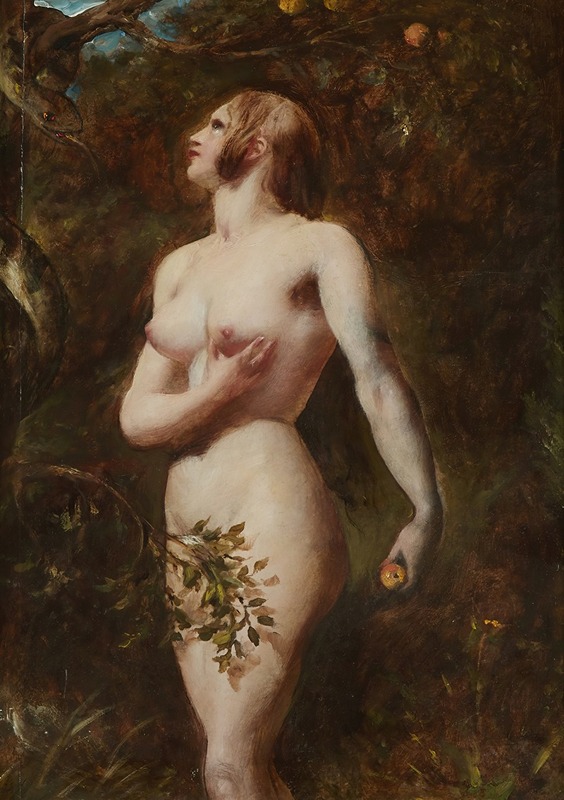
The Temptation of Eve
A hand-painted replica of William Etty’s masterpiece The Temptation of Eve, meticulously crafted by professional artists to capture the true essence of the original. Each piece is created with museum-quality canvas and rare mineral pigments, carefully painted by experienced artists with delicate brushstrokes and rich, layered colors to perfectly recreate the texture of the original artwork. Unlike machine-printed reproductions, this hand-painted version brings the painting to life, infused with the artist’s emotions and skill in every stroke. Whether for personal collection or home decoration, it instantly elevates the artistic atmosphere of any space.
William Etty's painting "The Temptation of Eve" is a notable work by the English artist, who was renowned for his depictions of historical and mythological subjects, often featuring the human form. Etty, born in 1787 in York, England, was a prominent figure in the British art scene during the 19th century. He studied at the Royal Academy of Arts in London and became known for his ability to render flesh tones with remarkable skill.
"The Temptation of Eve" is one of Etty's works that explores biblical themes, a common subject in art history. The painting depicts the moment from the Book of Genesis in the Bible where Eve is tempted by the serpent to eat the forbidden fruit from the Tree of Knowledge. This narrative has been a popular subject for artists throughout the centuries, as it represents themes of temptation, sin, and the fall of man.
Etty's approach to this subject is characteristic of his style, which often combined classical influences with a romantic sensibility. His work is known for its vibrant use of color and attention to the human form, and "The Temptation of Eve" is no exception. The painting likely features Eve in a state of contemplation or interaction with the serpent, capturing the tension and drama of the biblical story.
Etty's work was sometimes controversial due to his frequent depiction of nudity, which was not universally accepted in the conservative art circles of his time. However, he defended his work by arguing that the human form was a worthy subject for art, deserving of the same respect and attention as any other subject. His dedication to this belief is evident in "The Temptation of Eve," where the portrayal of Eve would have been executed with a focus on beauty and anatomical precision.
The painting reflects Etty's admiration for the works of the Old Masters, particularly the Venetian painters like Titian and Rubens, who were known for their rich color palettes and sensuous forms. Etty's ability to blend these influences with his unique vision helped him to create works that were both classical and innovative.
"The Temptation of Eve" contributes to Etty's legacy as an artist who was unafraid to tackle complex and provocative themes. His work continues to be studied and appreciated for its technical skill and its exploration of the human condition. While Etty may not have achieved the same level of fame as some of his contemporaries during his lifetime, his paintings have gained recognition for their contribution to the development of British art.
Today, William Etty's works, including "The Temptation of Eve," can be found in various collections, including those of major museums and galleries. His paintings are appreciated for their historical significance and their artistic merit, offering insight into the cultural and artistic milieu of 19th-century Britain.





